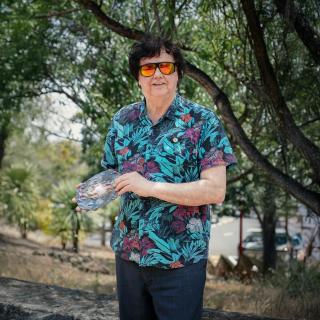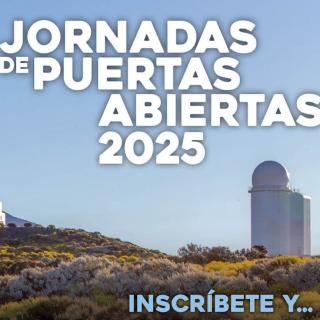Tomorrow, Tuesday 14th of July at 13.00, almost ten years alter launch, the New Horizons probe, will arrive at its destination: Pluto. The mission of this probe is to make observations of the planet and its moons to study their composition, structure, and atmospheres with a degree of detail which cannot be achieved by ground-based telescopes.
The present campaign is using two ground-based telescopes, the William Herschel Telescope (WHT), of the Isaac Newton Group of Telescopes, at the Roque de los Muchachos Observatory, (La Palma), and Gemini South of the National Optical Astronomy Observatory (NOAO) in Chile.
“The quality of the Canarian skies” explains Javier Licandro, director of the Solar System Research Group at the IAC “ is among the best in the world for astronomical observations. This quality, together with the new generation of instruments and the long experience of the research teams makes this the most appropriate site to study Pluto from the ground”.
The differences in the spectra obtained from ground-based telescopes correspond to the presence of large areas with different brightness and colour observed in each of the hemispheres of the planet observed by the New Horizons probe. As Licandro says, “ combining images and spectra lets us ascertain that the darker regions have a higher content of complex organic molecules than the bright regions, where there is a greater abundance of the ices of methane and other volatile ices”.
Dale P. Cuikshank, a NASA scientist who specializes in planets and a member of the New Horizons team explains that the ground-based observations are equally important “ because they help us link the first data from Pluto with its primeval appearance, as well as helping to connect future telescopic observations with its past behaviour”.
In the words of Noemi Pinilla-Alonso, coordinator of the observations, previously a researcher at the IAC, who collaborates with the Solar System Group of the Institute “ Constant monitoring of the surface of Pluto is necessary because this planet is known to be spectrally and photometrically variable from season to season, and probably during the whole secular calendar”, and she adds “By gathering data at different wavelengths we are able to characterize the distribution of the different materials which go to make up the surface and the atmosphere in different ways, from the layers of volatile ices (bright, whitish areas made up of methane, nitrogen, and carbon monoxide) to the more complex organic residues, which are reddish”.
Last year Pluto was already observed for six nights with the WHT and it was shown that the spectra showed small variations of colour and methane abundant when the planet’s rotation caused different parts of it to face the Earth. At this time, in La Palma, observations are being carried out with the ACAM camera on the WHT for a period of 11 nights, from3rd to 14th July, coinciding with the closest approach of the probe.
Vania Lorenzi, a doctoral student at the University of La Laguna, and support astronomer at the Telescopio Nazionale Galileo (TNG) also at the Roque de los Muchachos Observatory, commented that from the visible spectra obtained two principal characteristics of the surface of Pluto can be seen. “The clearest, “she notes “are the absorption bands due to methane ice. The second characteristic is the continuum slope of the spectrum which is an indicator of the colour of the surface. This colouring agent is not uniformly distributed over Pluto’s surface, but changes significantly during its rotation period, which is 6.4 Earth days. The new spectra will provide an important independent calibration of the MVIC (Multispectral Visible Imaging Camera on board New Horizons).
Ices and Rocks, the main constituents
Up to now, thanks to many observations made with ground-based telescopes, and those in space such as Hubble or Spitzer, we know that Pluto is a body made of ice and rock, with a diameter of 2.300 km, whose surface is covered with frozen methane, nitrogen, and carbon monoxide, as well as darer material, probably organic complexes (such as hydrocarbons), which give it its characteristic reddish colour. The presence of five satellites has also been conformed; one of them, Charon, is quite large, with a diameter of 1,200 km and covered in water ice. The spectroscopic observations have allowed us to study the changes in the surface composition of the planet, its ices as well as its complex organic molecules.
The current set of observations started in 2004 during the cryogenically cooled phase of the Spitzer space telescope when light fluxes from different regions of Pluto were taken during one complete rotation. In January 2006 the New Horizons probe was launched from Florida, in which was placed a small device containing the ashes of Clyde Tombaugh, the astronomer who discovered Pluto in February 1930. Just after New Horizons crossed the orbit of Mars, in August 2006 the (IAU) International Astronomical Union (lacking in any authority to do so) claimed to invent a new category for small bodies in the solar system, the dwarf planets, to which they assigned Pluto, Ceres, and new discoveries such as Haumea, Makemake and Eris. Notwithstanding this, the mission has not lost any of its initial fascination. Its results are very satisfactory, and are being celebrated internationally both by scientists and by amateur astronomers.
Contacts:
Javier Licandro: 922605549 / 676286824 jlicandr [at] iac.es (jlicandr[at]iac[dot]es)
Noemí Pinilla: npinilla [at] utk.edu (npinilla[at]utk[dot]edu)
More information



